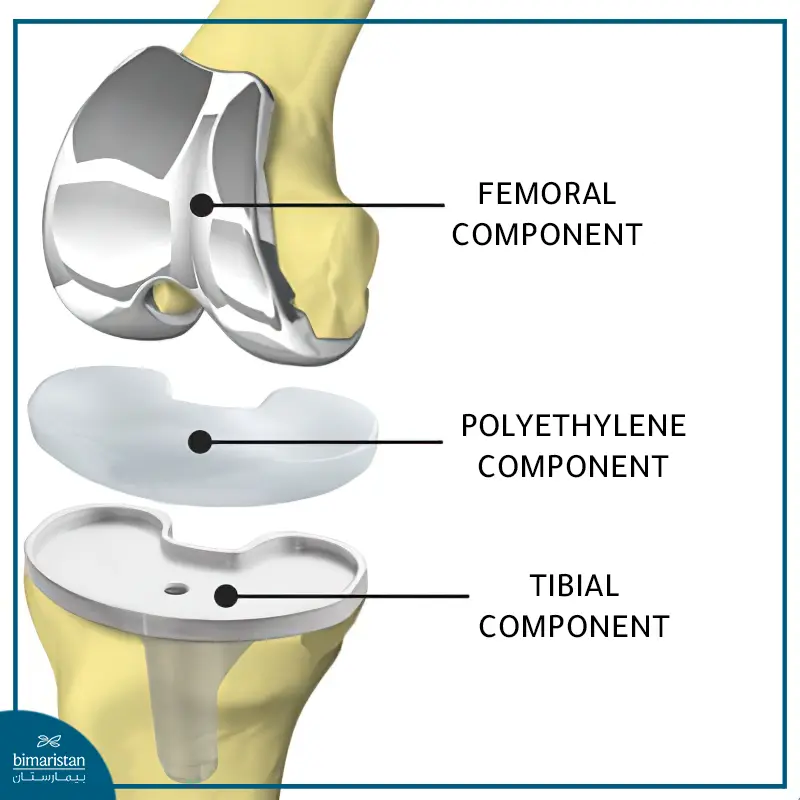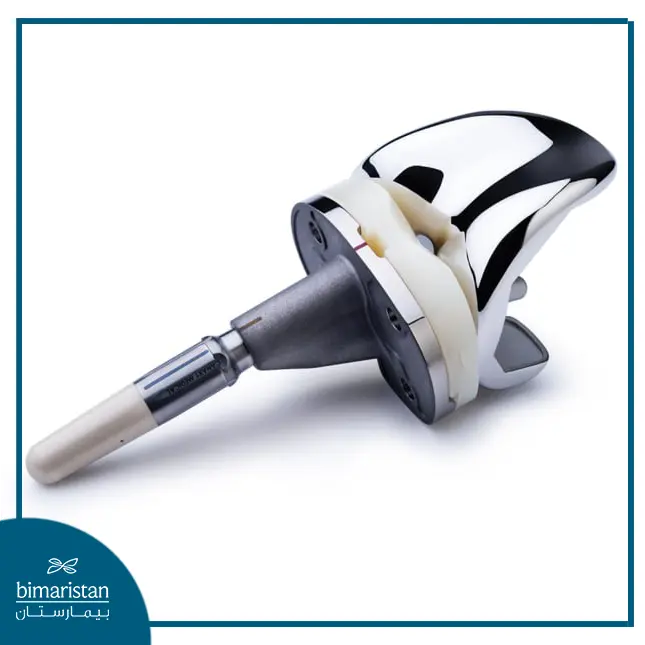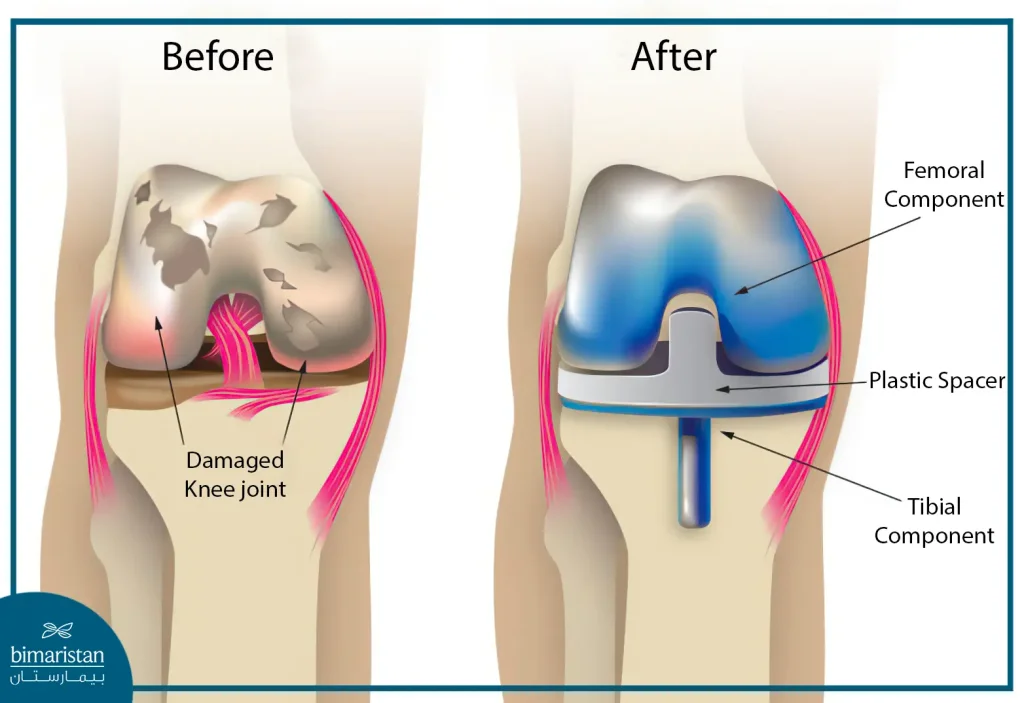Artificial knee joints are made with different materials based on manufacturer and stability. Let’s look at the different types of knee implants.
Knee replacement surgery is typically considered a final option for treating joint pain. It comes into play when other treatments, such as medications, cortisone injections, plasma, or stem cells, fail to relieve pain and stiffness caused by knee joint inflammation (osteoarthritis). When the knee joint’s cartilage erosion is severe enough to interfere with a person’s ability to walk, the artificial joint can significantly improve their range of motion.
At Bimaristan Medical Center, we offer affordable artificial knee joints, including the new American Zimmer joint. Our orthopedic surgeons in Turkey have extensive experience in knee joint replacement surgery. Travel and accommodation arrangements within Turkey are also provided. Contact us for more details.
What are the types of knee implants in Turkey?
Different types of artificial joints are available, each with unique features and costs. However, before we discuss them, it is essential to understand the difference between two procedures: total knee replacement and partial knee replacement.
If your knee is severely damaged with extensive cartilage erosion, replacing the entire joint surface is preferable. On the other hand, if the damage is limited to small parts of the joint and is detected early before it extends to different parts of the knee, then a partial joint replacement can be performed. This procedure involves precise surgery to preserve a part of the natural knee joint in place.
Each artificial knee joint consists of three main components: the femoral component (upper part) that replaces the lower end of the thigh bone, the tibial component (lower part) that fits on top of the shin bone, and a plastic surface that separates the two elements to allow smooth movement.

The doctor selects a specific type of artificial knee joint during the surgery based on various factors such as the surgical procedure, the patient’s condition, and age after prior discussion. These types are classified based on the material used to make the joint:
Metal on plastic
This particular prosthetic joint is currently one of the most widely used. It has been developed by several companies, including an American company known as ZIMMER. The joint comprises a titanium femoral component fixed onto a polyethylene plastic surface, allowing for smooth movement between the two parts.
This type of joint is usually long-lasting and typically does not require replacement. The metallic piece can be constructed from various materials, including cobalt, zinc, and zirconium.
One disadvantage of using this type of artificial joint is the risk of an allergic reaction, which could require further surgery. However, these complications have become increasingly rare due to the improvement in the quality of implants and the close monitoring of patients after surgery.
Ceramic on plastic
This type of joint implant has a ceramic femoral part and a polyethylene plastic separator, making it a suitable option for people with metal allergies.
Allergic reactions may still occur but are less common than metal components.
Ceramic on ceramic
Both the femoral and tibial parts of this type are made of ceramic, reducing the likelihood of allergic reactions and rejection compared to other artificial joints.
In rare cases, the joint may produce a squeaking sound, which can cause damage to the components over time. If damage occurs, surgery may be necessary to replace the joint.
Metal on metal
This particular type of knee implant is composed of metal femoral and tibial pieces. However, it has become less popular in recent times due to the potential risk of metal leakage into the bloodstream caused by chemical reactions between the different parts of the artificial knee joint.
Metal joints have been developed to last longer. Still, they can cause infections, pain, and, in rare cases, organ failure due to iron accumulation, which is seen in a condition called hemochromatosis. These joints are most suitable for young, active individuals. However, it is not advisable to use them in pregnant women due to the potential effects of metal on fetal development.

How to choose the best type of knee implant?
To answer this question, many factors need to be considered, including the patient’s age, level of physical activity, knee joint replacement surgery goals, the joint’s manufacturing company, and the appropriate cost.
The artificial knee implant should provide a wide range of motion, allowing the patient to perform daily activities without difficulties. It should also maintain its effectiveness for a long time without requiring replacement. These vital characteristics make an artificial knee joint a suitable and preferred option for the patient.
Doctors always recommend selecting an artificial joint that a famous company tests. Zimmer is considered one of the leading manufacturers of artificial joints worldwide. This specific artificial joint has been used in several patients and has produced positive outcomes without significant complications.
To determine the most suitable artificial joint for your condition, it is important to consult your specialized doctor and discuss your case in detail. We encourage you to contact our medical team for a free consultation. If you have questions about when to receive knee replacement surgery or have an artificial knee joint implanted, our team will gladly assist you.
When does a patient need to have an artificial knee joint?
Due to its weight-bearing nature and involvement in most daily movements, the knee joint is highly susceptible to injuries and inflammatory diseases. As a result, it is the most commonly affected joint in the body by osteoarthritis and sports injuries.
As people age, the pressure on their knee joints tends to increase. This pressure can become worse due to various factors such as obesity, a lifestyle involving heavy weight-bearing activities, or inflammatory conditions like gout in the knee. These factors can cause damage to the joint cartilage, which can become worse over time, making joint replacement surgery more likely to be necessary.
When individuals suffer from knee pain or face difficulty moving, they usually seek medical attention from their doctor. Initially, the doctor may prescribe pain relief medications to alleviate the symptoms. If there is no improvement, plasma or cortisone injections can be administered. In case the previous treatments fail, the doctor may suggest knee joint replacement surgery with an artificial joint to alleviate symptoms and improve the patient’s quality of life.
The symptoms above are usually due to osteoarthritis. In rare cases, severe sports injuries can cause significant tearing of knee cartilage, prompting the patient to undergo knee joint replacement surgery.
Knee arthroscopy assesses joint damage and determines whether partial or total joint replacement is necessary.

Is there an alternative to knee joint replacement surgery?
If issues related to your knee are identified at an early stage, before significant cartilage damage occurs, there are other treatment options available. For example, stem cell injections for knee or physical therapy sessions can reduce pain and improve the range of motion without having to undergo surgery.
It is also possible to perform arthroscopic surgery to repair knee cartilage if the injury is limited to cartilage tears. However, in severe cases of knee injuries, knee joint replacement surgery becomes the best option.
Cost of artificial knee joints in Turkey
The cost varies depending on the types of knee implants, the type of surgical procedure, and the patient’s condition. On average, the price for an artificial knee implant in Turkey ranges from $5000 to $12000. Despite Turkey’s excellence in this field, this price is much lower than in other countries. The procedure cost in Britain is approximately €16000, while in the United States, it is $20000.
You can be confident that you will receive outstanding medical services at an affordable price. Our team of medical professionals has years of experience working with patients from different Western and Arab nations, ensuring the success of your treatment journey in Turkey.
The types of knee implants vary depending on the materials they are made of. At Bimaristan Center, we offer the best types of artificial joints at the lowest possible prices and guide you to the best knee replacement surgeons.
Sources:
- Materials used for hip and knee implants
- Choice between implants in knee replacement


